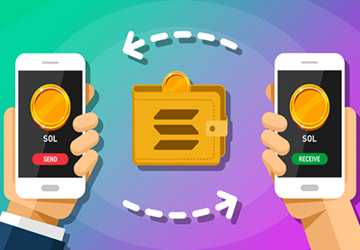Nonfungible tokens (NFTs) are becoming increasingly popular, which has caused problems, including excessive transaction costs and congestion in the widely used Ethereum-based ecosystem. In addition, the fee issue strongly discourages anyone looking to complete transactions on the network.
According to a Reuters article, NFT sales in 2021 were $24.9 b, a significant increase over the $94.9 m in 2020. From a meager 545,000 wallets dealing in NFTs in 2020, there are now around 28.6 million. The gas charge recently increased to $3300 when Bored Ape issued its NFTs, providing a taste of how awful Ethereum's costs were.
Because of an inventive proof-of-history (PoH) time mechanism and a proof-of-stake (PoS) protocol structure, Solana (SOL) has emerged as a significant rival to Ethereum. Moreover, it performs astonishingly better on two crucial criteria, transaction cost and speed.
We will go through Solana's advantages over other marketplaces and blockchains in this post and how to purchase NFTs on Solana.

Advantage of Solana
Compared to Ethereum's blockchain, which has block times of 13 seconds and 70 transactions per block, this one has block times and block sizes of 20,000 transactions, allowing the network to charge an extraordinarily cheap gas price of $0.00025 for each transaction.
With the advent of tools like Solana, customers may now acquire NFTs with a small transaction charge and little congestion problems. It means that SOL NFTs or Solana are easier to obtain than Ethereum ones.
Solana NFT markets
If you're wondering where to look, marketplaces are the best location to buy Solana NFTs. The minting, purchasing, selling, and trading of NFTs occur in particular markets. This is quite similar to conventional cryptocurrencies controlled through exchanges and digital wallets. The most well-known Ethereum NFT market is OpenSea.
Three well-known markets support Solana NFTs: SolSea, DigitalEyes, and Solanart. While issuing new NFTs, SolSea allows developers to select and integrate their licenses. You may locate, acquire, and exchange NFTs on Solanart. Popular platform DigitalEyes offers collections, including Solana Monkey Business and the Frakt.
Purchasing Solana NFTs
Considering the best ways to sell and purchase Solana NFTs? Here are the processes involved in buying NFTs on Solana:

Get yourself a Solana wallet.
Obtaining a wallet with a Solana framework is the first action you must do. Phantom and SolFlare are two well-known wallets. The open-source wallet Sollet is suitable for experienced users. However, you must consider the collecting, fees, and working conditions of these NFT markets. As a result, you must conduct thorough research before investing your cash.
Using the solution of your choice, make a new wallet and link it to the Solana marketplace of your choice. You may follow the process via the market's website.
The famous Ethereum ETH wallet Metamask does not support SOL tokens; thus, if you try to use it to do any actions on Solana, your SOL will vanish forever. Phantom is Solana Network's Metamask.
Obtain SOL coins
Similar to how ETH is required on Ethereum-based marketplaces, SOL is the only cryptocurrency accepted on Solana NFT platforms. Several exchanges offer SOL coins for purchase. The normal procedure is establishing a connection between your fiat account and the exchange, moving money, and acquiring the necessary SOL amount. Finally, this SOL has to be withdrawn to your wallet address.
Withdraw only the amount required to purchase the NFT to be safe. For instance, if an NFT for 25 SOL is available, you can withdraw that amount plus the required transaction charge. Alternately, you can trade your stablecoins for SOL and send the money to your wallet address.




